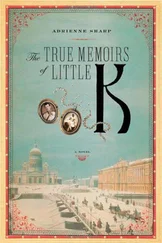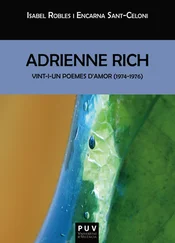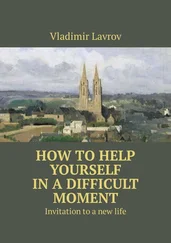Enter here: the darling imp. Her fingers light on the stem of her glass, tongue reaching out to lips to catch an errant drop. You stood by that grotesque cactus, soft body hitched and stitched into a defiant geometry. Behind you, the balcony. Below that, the Moika. How many times have I repeated this image to myself, wondered what you were thinking? Were you drawing a map of escape in your mind? Tracing lines in the carpets that hung for insulation on the walls? Had you spotted a cockroach and watched it climb into the pocket of an ex-counselor to the tsar? You wouldn’t tell me. Still haven’t. Your imagination is yet a locked box. Of course I didn’t tell you, then, how you dragged the shadow of Dina behind you, catching my eye with her lost silhouette but keeping it with your impudent own. It seemed, after all, unimportant. As I approached you I understood anew the role that Dina had played in my life: not a tragedy, but a guide. Not perfection, but a mark of my own poor imagination, which saw in her the ur.
I picked up your wrist and turned it over, watching the sweet blood run beneath your skin. You looked at me, quizzical. Mouth turned down. Hair squeezed by the black velvet ribbon that secured your requisite disguise. And then you smiled.
God Save the Motherless Child?
A look back at the so-called “orphan boat”
From the New York Register , Opinion Page, May 1928
NEW YORK, NY. Most readers will remember the daring rescue undertaken by the Committee on Futurity (commonly referred to as “The Furies”) some three years ago, when a group of orphaned Soviet children were secreted onto a passenger steamer in the hopes of bringing them to our country and offering them the best of American values. Details of the children’s liberation were popular news at the time, particularly the unlikely series of tactics supposedly employed by the Furies, which included subterfuge, scout troops, coded newspaper articles, special whistles and hand signs, and the implausibly named “Cat Burglar Escape.” But now, with the arrival of the “orphan boat” at Ellis Island safely in the past, what do we really know about the children themselves and their plans for our nation? Attempts by this newspaper to track down and interview any of the orphans were firmly stonewalled by Fury spokesman Roberts and his team.
The notion that these children may not be innocent—that they may, in fact, have been part of a plot to infiltrate our home life with spies—first emerged along with the news that the orphans were not from German and Polish ghettos as assumed, but instead from Soviet orphanages all around the USSR. Suspicions only increased during the ship’s two-week quarantine in harbor, which many hypothesized was due not to flu (as the Furies reported) but instead to the heightened political tension around the ship’s passengers. During this period, lights were frequently seen on the boat at night, and sometimes figures were spotted moving around the dock. Sources close to the Register insisted that occasionally the lights would “change color” or “move funny” in the dark, but these reports were never substantiated.
Thanks to an anonymous tip, Register reporters were on the scene when the children were finally released and sent on to their new American homes on a quiet night in December. Two hundred small figures were removed from the boat, huddled beneath coats and blankets, before being placed into waiting vans and taken to the nearest train depot. Although the crowd was told the orphans were young and sick, bystanders eager for a closer look continued to press toward the children, and flashbulbs popped regularly in the darkness. One onlooker even waved a knife in the air while declaring himself “ready to act” if necessary, and though this man was quickly subdued by authorities, there were some present who questioned whether his actions were those of a crank or a hero.
Three years later, we are still left with the same uncertainties. Was it charity to place these children with American families, or a boondoggle of the greatest order? Did they grow up to contribute productively to their households, or did they wait and watch for the moment they might undermine them? With the Furies still closely guarding their whereabouts, we’re still no closer to finding out.
19.
When I was one of them, the girls of the Donne School all seemed unique to me, each equipped with her own set of interests (which I knew of) and hidden talents (which I sometimes suspected), and peculiar embarrassments (which I rarely understood), not to mention a pair or two of infrequently laundered pajamas. They all had names: Jenny Hollinger, Leonora Torrance, Margaret Rathburn, Cindy Pink. Josephine Toff and Ashley Pearson, Regina Anderson and Leah Wills. It was only once I joined the staff that they became as one to me, a sea of girls washing forward out of classroom doors, dredged back into seats with the chime of a bell. Totally tidal and predictable. Utterly furious in their force.
It’s true I endured my fair share of snubbing as a student—as I’ve said, I didn’t really have friends. But it was accepted that I was supposed to be there. A little exotic, a little pathetic. Their mascot European exile with her heavy accent (embarrassing: I rid myself of this as soon as I could) and quietly ridiculous turns of phrase. Many fellow students recognized me as Margaret’s roommate, and put me under their wing for that reason, helping me pick the one good dessert from a table full of sticky canned puddings, or stopping me outside the bathroom to point out the toilet paper attached to my shoe. (It took me years to get the hang of throwing soiled tissue into the toilet instead of a wastebasket, as I’d been taught to do back home. Especially considering the dented tins placed in every stall for items of feminine hygiene; how was I supposed to know the difference? Lucky for me, none of the girls ever knew. I think I’d have been lynched, or would, at the very least, have acquired a sickening nickname.) At graduation we all wore black gowns and hugged on the lawn, creating a tableau not unlike my original dreams of the Donne School, but in reverse. Good-byes, not hellos. Dark clothing, not white. Still quite tender.
I expected things to carry on more or less the same way when the new semester started and I began my work in the greenhouse, after spending the summer reading horticulture periodicals and receiving daily tutorials from John O’Brien. Yes, it was unusual for a graduated senior to remain on campus, but I was hardly older than the rest of the girls. In fact, most of the returning students already knew me: as a former upperclassman, albeit an unpopular one. In perhaps the last gasp of my socialist-optimist naïveté, I really thought this familiarity would work to my advantage.
The first day was flush with move-ins, slammed car doors. I heard shrieks of greeting as I trudged to and from the greenhouse, carrying sacks of fertilizer and seedling pots from the back of John’s pickup. We were behind our original schedule, still fixing things into place, but were confident about finishing on time, and anyway it added visibility to the project, having us work so vigorously in such plain view. Already that morning we’d scrubbed the glass clean and checked all the window seals, and we’d spent the past two weeks testing how well the space held its temperature when set to various levels: mild, tepid, hot, steaming. I had a hanging basket of spray bottles, some full of water, some nutrient-rich soil enhancers, some a mild dish soap solution to discourage pests. One had nettle tea. Now we were bringing in the plant life, and I felt an unexpected wave of maternal awe. Holding a flat of young tomatoes, I wanted to cry at the great vulnerability there at my fingertips. The spice smell, the fragile stems, the sticky hairs—it all combined, for me, into something quite infant-like, a cold and shivering tray of children being shuttled away from the only home they’d ever known. I wondered what it was like for them to ride in the bed of a truck, en plein air . If it was stunning. If they felt fear. Rocking gently back and forth like children on the deck of a boat in a storm. But never mind.
Читать дальше












